VOL- 2, ISSUE- 1, PUNE RESEARCH DISCOVERY (ISSN 2455-9202) JIF 2.01
2.1 DISCOVERY
Area of Article : ALL
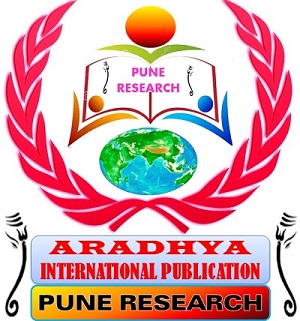
VOL- 2, ISSUE- 1, PUNE RESEARCH DISCOVERY (ISSN 2455-9202) JIF 2.01
2.1 DISCOVERY

VOL- 2, ISSUE- 1, PUNE RESEARCH DISCOVERY (ISSN 2455-9202) JIF 2.01
2.1.1 DISCOVERY

For universal healthcare, lower drug prices to the purchasing power of consumers in different geographical or socio-economic segments of the country could potentially be a very effective way to improve access to medicines for people living in low and middle-income groups. A well-implemented differential pricing system could also lead to universal availability of health care. The current study is the review of the sixteen research work on the said subject.
Keywords: Lower drug price, access to medicine,
VOL- 2, ISSUE- 1, PUNE RESEARCH DISCOVERY (ISSN 2455-9202) JIF 2.01
2.1.2 DISCOVERY

Economic growth with social justice is prime objective of Indian economy. The government initially believed in trickledown theory i.e. benefits of growth will trickledown till bottom and the people will be uplifted above poverty line. But in reality trickledown theory did not work. Instead the gap between rich and poor increased over a period of time.
This paper is a humble attempt to review the role of RBI in implementing Financial Inclusion (FI) policy in India over a period of time. The study also reviewed the progress report of FI in India. The country has come long way in the process of financial inclusion, but still has a long way to go. We were moving from mandates, subsidies and reliance on the public sector banks for inclusion. Now we are creating frameworks that attract and enable financial institutions to target the excluded. The interests of the excluded are protected through education, competition and regulation. Financial inclusion will be an important element in ensuring access and equity, necessary building blocks for the sustainable growth of our country.
VOL- 2, ISSUE- 1, PUNE RESEARCH DISCOVERY (ISSN 2455-9202) JIF 2.01
2.1.3 DISCOVERY
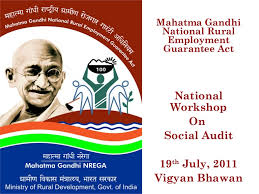
After Independence, The central and state governments
have adopted number of poverty eradication programmes especially in rural
areas. Among these the MGNREGA is pioneer one playing a vital role in providing
employment in rural areas. The National Rural Employment Guarantee Act, (NREGA)
was notified on September 7, 2005 and came into force on February 2, 2006. The
objective of the Act is to enhance livelihood security in rural areas by
providing at least 100 days of guaranteed wage employment in a financial year
to every household whose adult members volunteer to do unskilled manual work.
Approximately 70 percent of rural population of the country depends on the
agriculture & allied activities. Employment in the agriculture is available
in one or two seasons. Remaining seasons, some of people used to migrate to the
cities and other countries’ for their employment. Most of the people in the
rural areas are in the below poverty line and in unemployment, this is the
situation before the enactment of MGNREGA in India in 2005. The Act came into
force with aim of increasing livelihood security of households in rural areas
of the country by providing at least 100 days of guaranteed wage employment in
a financial year to every household whose adult members volunteer to do
unskilled manual, Generate productive assets through wage employment,
Proactively ensure social inclusion and build up Panchayat Raj Institutions.
MGNREGA has become as important instrument for inclusive growth in rural India.
It has become largest employment provider program in the world. MGNREGA is one
of the important programmes for the marginalized groups in all over India
giving the social and economic benefit through providing the employment
opportunities.
VOL- 2, ISSUE- 1, PUNE RESEARCH DISCOVERY (ISSN 2455-9202) JIF 2.01
2.1.4 DISCOVERY

The major objective of this paper is to study the importance and problems of informal sector (un-organized sector) in the growth story of Indian economy in the recent period. This study is based on primary survey work, self study and secondary information retrieved from various sources. Most of the information is retrieved collected from electronic media and print media like text books, reference books, previous researches, panel discussion, news reports, sector-wise reports from national and international organizations, government’s agencies, etc. It is observed that job creation capability of Indian formal sector is much slower than the increasing work force population in India. While the major job creator and job provider (reducing unemployment ratio) are the informal sectors through the out the developing nations and India is not an exception. It is suggested that government should encourage the unorganized players by upgrading their production methods through latest technology, arrange proper trainings and skill development courses to their employees in production and management, making available funds (loans, subsidies) at affordable terms with minimum paper requirement to avoid hassle free entry and convert them into formal sector smoothly.
Keywords:
Informal sector, Formal sector, organized sector, unorganized sector, Indian
Economy, Economic growth.
VOL- 2, ISSUE- 1, PUNE RESEARCH DISCOVERY (ISSN 2455-9202) JIF 2.01
2.1.5 DISCOVERY
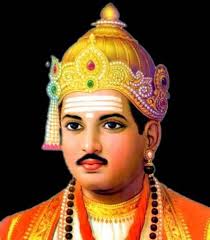
Basaveshwara was the founder of
Virasaiva religion. No man has a right to live on this earth without work. In
other words, work or labour is a true way of worship of the universal God. That
work which is in the interest of society, that is True and Pure is described by
the great prophet Basaveshwara as "Kayaka" (work). Meaning the
physical labour wherein all the three components Body, Mind and Soul are
involved. He gave the slogan "Kayakave Kailasa" i.e. True work is the
very abode of Divinity. Basava, did not discriminate between men and women, in
their devotion.
VOL- 2, ISSUE- 1, PUNE RESEARCH DISCOVERY (ISSN 2455-9202) JIF 2.01
2.1.6 DISCOVERY
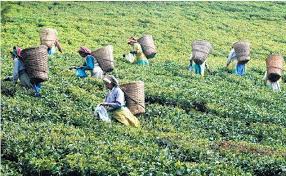
The Jute and tea industry occupies an important place in the national economy of India. It is one of the major industries in the eastern region, particularly in West Bengal. Jute, the golden fibre, meets all the standards for ‘safe’ packaging in view of being a natural, renewable, biodegradable and eco-friendly product. It is estimated that that the jute industry provides direct employment to 0.37 million workers in organized mills and in diversified units including tertiary sector and allied activities and supports the livelihood of around 4.0 million farm families. In addition there are a large number of persons engaged in the trade of jute. On the other hand the tea industry is only industry where India has retained its leadership over the past 150 years offering a variety of products, from original orthodox to CTC and now green tea, Darjeeling tea, Assam tea and Nilgiris tea. No other country has so many popular varieties of tea...
VOL- 2, ISSUE- 1, PUNE RESEARCH DISCOVERY (ISSN 2455-9202) JIF 2.01
2.1.7 DISCOVERY
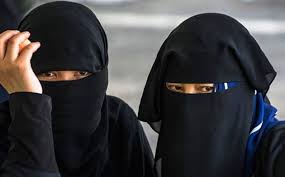
Muslim women in general face a lots of constraints in empowering themselves. Education is one of the potent factors in empowering the women. In our study we have conducted the sample survey of 270 educated Muslim women to find whether the education has really empowered the Muslim women in Pune city. We find that education has empowered the Muslim women and also we have made some recommendation to empower the Muslim community in general and the Muslim women in particular for main streaming the development.
Key
Words:
Social Inclusion, Education, Empowerment and Muslim women
VOL- 2, ISSUE- 1, PUNE RESEARCH DISCOVERY (ISSN 2455-9202) JIF 2.01
2.1.8 DISCOVERY

This paper summarizes financial inclusion strategy of
Indian banks across India. To accelerate the growth and development and condense
the income inequality and poverty, the access to safe, easy and affordable
credit and other financial services to the poor and vulnerable groups, are
recognized as a pre-condition. The aim of financial inclusion is delivery of
banking and financial services in a fair, translucent and impartial manner at
reasonable cost to the vast sections of disadvantaged and low income group.
Now-a-days, however, financial inclusion is seen to be something more than
opening bank branches in unbanked areas to take formal financial services
across the length and breadth of the country. The fundamental objective of all
these initiatives is to reach the large sections of the financially excluded
Indian population.
VOL- 2, ISSUE- 1, PUNE RESEARCH DISCOVERY (ISSN 2455-9202) JIF 2.01
2.1.9 DISCOVERY
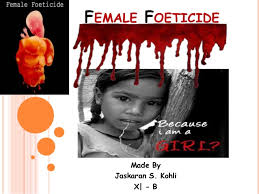
Women are socially excluded in many societies. There are a number of reasons for this phenomenon. This exclusion manifests in the form of malnourishment, anemia, bearing too many children for the sake of husband and in-laws, poverty, illiteracy, over-burden of work, lack of economic opportunities, dependence on others, etc. The worst form of this exclusion is in the form of female feticide. Here, we want to examine declining child sex ratio in India due to female feticide, which will have disastrous impact on entire Indian society in future. Already it has disastrous impact on society in Haryana. In case of Maharashtra, according to the Census 2011 data, fewer girls are born in rural areas than in urban areas. The child sex ratio (number of girls born per every 1000 boys) has fallen from 916 in 2001 in rural Maharashtra to 880 in the last decade – a drop of 36 points. In the same period, the child sex ratio in urban Maharashtra, has dipped from 908 to 888 – a drop of 20 points. One of the main reasons for the declining sex ratio is female discrimination in Indian society...
VOL- 2, ISSUE- 1, PUNE RESEARCH DISCOVERY (ISSN 2455-9202) JIF 2.01
2.1.10 DISCOVERY
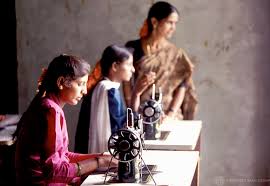
In society state has always been occupying a central figure, either as a
political institution or an institution with the responsibility of the welfare
of its citizens. State, therefore has also bears the debate about its nature
and contents. The debate is over the issue of ‘responsibility of state’ where
two poles stand opposite to one another either by elevating its role in social
welfare and human security or diminishing its role to a negligible or minimal
state.
VOL- 2, ISSUE- 1, PUNE RESEARCH DISCOVERY (ISSN 2455-9202) JIF 2.01
2.1.11 DISCOVERY
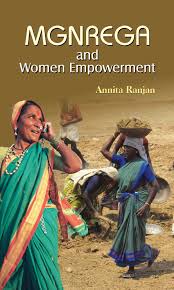
Rural development remains one of the major challenges to policy makers in India. Mahatma Gandhi stated that India lives in its village. According to a recent Indian Government committee constituted to estimate poverty, nearly 26% of India’s population is poor. More than 68% of poor people reside in villages. Rural poverty is largely a result of low productivity and unemployment. In order to alleviate rural poverty by generating employment and creation of sustainable assets in Rural India, Government of India brought in the flagship programme called Mahatma Gandhi National Rural Employment Guarantee Act (MGNREGA), 2005. The Mahatma Gandhi NREGA has become a powerful instrument for inclusive growth in rural India through its impact on social protection, livelihood security and democratic governance. The present paper analyses the role of MGNREGA in rural development.
Key Words: MGNREGA, Rural Development, Poverty, Programme.
VOL- 2, ISSUE- 1, PUNE RESEARCH DISCOVERY (ISSN 2455-9202) JIF 2.01
2.1.12 DISCOVERY

The informal sector or grey economy is the part of an economy that is neither taxed, nor monitored by any form of government. The activities of the informal economy are not included in the gross national product (GNP) and gross domestic product of a country. The other concepts which can be characterized as informal sector can be include the black market ( Shadow economy, underground economy), agorism and associated idioms include “ under the table”, “off the books” and ‘working for cash”
The informal sector plays a significant role in the upliftment of the country’s growth trajectory.The informal sector provides critical economic opportunities to the poor in various circumstances and contributes hand in hand with formal sector in the rapid growth of the economy since 1950.In this case integrating the informal economy into the formal sector is a challenge for the government. By the way of demonetization the present government tries to bring the informal sector into formal sector. In this paper it is tried to analyse the contribution of informal sector in the growth story of India.
Keywords: Informal sector, formal sector,
VOL- 2, ISSUE- 1, PUNE RESEARCH DISCOVERY (ISSN 2455-9202) JIF 2.01
2.1.13 DISCOVERY
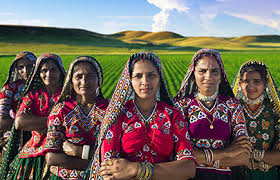
India's agriculture
sector continues to be the lifeline of people and a central factor in the
economy's overall productivity. Historically, India's agriculture growth has
lagged growth in the overall economy. Consequently, India has just managed to
maintain its per capita growth in food and non-food crop production. Increasing
profitability in agriculture through higher productivity has been an important
goal in developing countries like India. It has become relevant in recent years
due to limited scope for expansion of arable land. Increasing yield to their
technically highest level may be feasible, through adequate investment in
infrastructure and technology i.e. irrigation, land development, storage,
markets, etc. Besides appropriate pricing of inputs and outputs, availability
of credit and extension services would facilitate access to available
technology, like most of other developing countries; India has predominantly
been an agrarian economy, with agriculture sector contributing the largest
share to gross domestic product and employment. Under the colonial regime,
Indian agriculture was geared towards the production of commercial crops (tea,
coffee, rubber, cotton, etc.). After independence, India depended heavily on
imports of food grains as it inherited a stagnant, low-productivity, food-crop
sector. This paper analyses the dynamics of structural transformation of the
Indian economy and major drivers of transformation, giving an overview of the
past achievements and the future challenges in Indian agriculture, finally
identifying the key policy issues and strategies to accelerate sustainable
growth in the agriculture sector in the country.
Keywords: Sustainable Agriculture, Inclusive Growth, Dietary Consumption, Institutional Credit, Agricultural Price Policy.
VOL- 2, ISSUE- 1, PUNE RESEARCH DISCOVERY (ISSN 2455-9202) JIF 2.01
2.1.14 DISCOVERY

Development of infrastructure is critical to ensure that the farmers get their inputs in time and in adequate quantities, at lowest possible prices. On the output side, it ensures that they get the highest possible share in prices paid by consumers. It would be worth incorporating construction of low-cost housing, community toilets, and supply of electricity and water in rural areas as parts of an investment system. This could be designed and developed with the help of local people, keeping in mind regional specificities at the sub-state level. These schemes could be integrated with employment generation and poverty alleviation programmes such as MGNREGA, JRY and IRDP. To get the maximum mileage out of reforms on the demand and supply sides, availability of credit becomes critical. To enable the banking system to respond to the needs of agriculture without any undue financial burden, concessional rates of interest to agriculture should be withdrawn and repayment performance improved, while supplies of rural credit are augmented.
Key words: Innovation, Infrastructure, Agriculture
VOL- 2, ISSUE- 1, PUNE RESEARCH DISCOVERY (ISSN 2455-9202) JIF 2.01
2.1.15 DISCOVERY
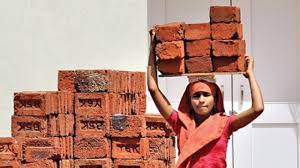
The aim of present study is to highlight problems faced by professionals in unorganized sector. The area includes unorganised sector professionals (hawkers, peddlers and street vendors) in Maharashtra. Literature Review analysis was used to analyse the Secondary data obtained from different sources. The study showed that significant percentage of professionals were suffered from threat of change in location, insufficient space for business, harassment from Government specially municipal employees/officials, harassment from anti-social elements, insufficient business facilities and rules and regulations. However the problems such as insecurity for goods, environmental problems due to rain and temperature, health problems due to pollution and loss of goods due to some incidences had not affect the business of unorganized sector professionals severely.
Key
words: Unorganised
Sector, Problems, Professionals, Employment
VOL- 2, ISSUE- 1, PUNE RESEARCH DISCOVERY (ISSN 2455-9202) JIF 2.01
2.1.16 DISCOVERY
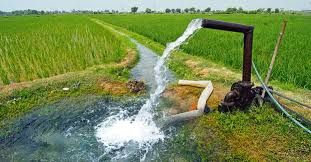
VOL- 2, ISSUE- 1, PUNE RESEARCH DISCOVERY (ISSN 2455-9202) JIF 2.01
2.1.17 DISCOVERY

Indian economic environment is witnessing path breaking
reform measures. The financial sector, of which the banking industry is the
largest player, has also been undergoing a metamorphic change. Today the
banking industry is stronger and capable of withstanding the pressures of
competition. While internationally accepted prudential norms have been adopted,
with higher disclosures and transparency, Indian banking industry is gradually
moving towards adopting the best practices in accounting, corporate governance
and risk management. Interest rates have been deregulated, while
the rigour of directed lending is being progressively reduced.Today,
we are having a fairly well developed banking system with different classes of
banks – public sector banks, foreign banks, private sector banks – both old and
new generation, regional rural banks and co-operative banks with the Reserve
Bank of India as the fountain Head of the system. In the banking
field, there has been an unprecedented growth and diversification of banking
industry has been so stupendous that it has no parallel in the annals of
banking anywhere in the world.During the last 41 years since 1969, tremendous
changes have taken place in the banking industry. The banks have shed their
traditional functions and have been innovating, improving and coming out with
new types of the services to cater to the emerging needs of their customers.
VOL- 2, ISSUE- 1, PUNE RESEARCH DISCOVERY (ISSN 2455-9202) JIF 2.01
2.1.18 DISCOVERY

India is known as "Land of
Villages". About 67% of India's population lives in villages. The main
occupation of them is agriculture and other activities related to agriculture.
Agriculture is the largest and dominant sector of our economy providing
livelihood to about 70% of the population of India. Agriculture plays a pivotal
role in the Indian economy. Although its contribution to gross domestic product
(GDP) is now around one sixth, it provides employment to 56% of the Indian
workforce. Also, the forward and backward linkage effects of agriculture growth
have increased the incomes in the non-agriculture sector. The growth of some
commercial crops has significant potential for promoting exports of
agricultural commodities and bringing about faster development of agro-based
industries.
VOL- 2, ISSUE- 1, PUNE RESEARCH DISCOVERY (ISSN 2455-9202) JIF 2.01
2.1.19 DISCOVERY

The problems of aged women in Indian are escalating along with the transformation in lifestyles. Both urban & rural women have been facing problems of isolation, economic insecurity, social exclusiveness, mounting uncertainty of livelihood etc. Their problems are enhancing as they are also facing diminishing health problems. The problems of aged women are of a great concern in India because they need interventions different from young women & their tribulations completely diverge from others. In India nearly 40% of India’s population comprise of old people & several researches have shown that they are targeting of severe abuse, abandonment, social deprivation, humiliation such other social problems. This paper examines the facets of impact on life style alterations aged people suffer in changed social situation in India & this paper also streamlines the imperative significance of adopting strategies to inclusive growth heralding community empowerment.
Key words: aged women, socio economic
exclusion, social conditions,
inclusive policy.
VOL- 2, ISSUE- 1, PUNE RESEARCH DISCOVERY (ISSN 2455-9202) JIF 2.01
2.1.20 DISCOVERY

The research paper on financial inclusion & growth of India is an
effort of the author to light on main financial inclusion schemes announced by
prime minister of India .The author highlights the ways with the help of which
the schemes can be more effectively implement in the India. As India is a big
country many people are still deprived from financial services. The paper
studies the basic concept of financial inclusion & various ways to achieve
the same .It also tries to cover the relation between the financial inclusion
& economic growth of India.
Keywords- Financial Inclusion & Economic Growth
VOL- 2, ISSUE- 1, PUNE RESEARCH DISCOVERY (ISSN 2455-9202) JIF 2.01
2.1.21 DISCOVERY

Social exclusion and inclusion are two terms that are making inroads in
policy discourse, especially in developing nations including India. They are
not part of a binary, although inclusion should be understood in the context of
exclusion. In the Indian context exclusion revolves around societal
institutions that exclude on the basis of group identities such as caste,
ethnicity, religion and gender.
VOL- 2, ISSUE- 1, PUNE RESEARCH DISCOVERY (ISSN 2455-9202) JIF 2.01
2.1.22 DISCOVERY
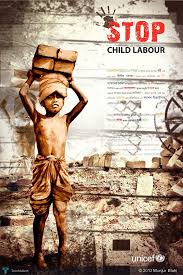
Children are the greatest gift to humanity and Childhood is an important stage of human development as it holds the potential to the future development of any society. Children are brought up in an environment, which is conducive to their intellectual, physical and social health; grow up to be responsible and productive members of society. Every nation links its future with the present status of its children. By performing work when they are too young for the task, children unduly reduce their present welfare or their future income earning capabilities. Under extreme economic distress, children are forced to forego educational opportunities and take up jobs which are mostly exploitative as they are usually underpaid and engaged in hazardous conditions. Parents decide to send their child for engaging in a job as a desperate measure due to poor economic conditions. Children are sent to work at the expense of education. There is a strong effect of child labour on school attendance rates and the length of a child’s work day is negatively associated with his or her capacity to attend school. Child labour restricts the right of children to access and benefit from education and denies the fundamental opportunity to attend school. Child labour, thus, prejudices children’s education and adversely affects their health as well as safety. As per the Census 2001, there are 1.26 crores economically active children in the age-group of 5-14 years. In the modern era of 21st century child labour is a curse for the Indian Economy. In this article it is tried to evaluate the work force of child labour in Indian economy and its inclusion in the society.
Keywords:
Child labour, Health, Education, Growth
VOL- 2, ISSUE- 1, PUNE RESEARCH DISCOVERY (ISSN 2455-9202) JIF 2.01
2.1.23 DISCOVERY

India is one of
the fastest growing economy but the fruits of development is not trickling down
to all sections of society equally, especially socially excluded sections viz.
Tribals, Dalits and Muslims minority. India’s fast growth rate of over 7 per
cent since 2003-4 has been globally acknowledged but its HDI ranks 130thindicating
a less than commensurate performance on human development. Ironically, public spending on social sector is
gradually decreasing and subsidies to rich corporate entities have become an
increasing trend in present day government. The HDI is not something that makes
headlines in the country, nor does the low social spending.
VOL- 2, ISSUE- 1, PUNE RESEARCH DISCOVERY (ISSN 2455-9202) JIF 2.01
2.1.24 DISCOVERY

The
concept of “Inclusive growth” was first envisaged in the Eleventh five year
plan document which intended to achieve a growth process with broad-based
improvement in the quality of life and equality of opportunity to all. Twelfth
plan document highlighted this agenda more emphatically with specific focus on
reducing poverty, improving health and education facilities and livelihood
opportunities. Inclusive growth means economic growth that creates employment
opportunities and helps in reducing poverty.
VOL- 2, ISSUE- 1, PUNE RESEARCH DISCOVERY (ISSN 2455-9202) JIF 2.01
2.1.25 DISCOVERY

In the recent three decades India grows from the relative and absolute poverty and accelerated its growth in the last few years. In the first thirty years of planning from 1950 to 1980 India’s growth was quite low. From 1980 the growth smoothly accelerated to shape uptrend and in the regime of then finance minister Mr Manmohan Singh when he introduces the policies for globalization, the real growth of Indian economy has seen to start. Despite some fluctuations in the growth rate from 1980 to 2000 a sustained and average rate of growth of 5.7% per annum could be maintained. Later on this growth rate gives a new millage to the Indian economy and we could see a better growth rate. But still we have seen that the several parts and sector of Indian economy could not participate in this growth story. So in this paper it has tried to analyse the challenges and opportunities in the growth trajectory of India.
Keywords: Inclusive growth, Growth rate,
Challenges, Indian economy
VOL- 2, ISSUE- 1, PUNE RESEARCH DISCOVERY (ISSN 2455-9202) JIF 2.01
2.1.26 DISCOVERY
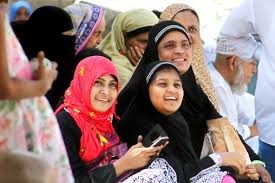
Bangladesh
has historically been a land of many races. Long before the arrival of the
Aryans in the 5th and 6th centuries BC, the Bengalees were already racially
mixed; on that count, the Aryans described them as “sankaras” or “hybrid
people”.
The ancestors of present day inhabitants of Bangladesh have therefore emerged from the fusion of such diverse races as the Austric, Dravidian, Mongoloid, Homo-Alpine, Mediterranean Brown, Aryans and so on. The earliest historical reference to organised political life in the Bangladesh region is traced to the writings on Alexander’s invasion of India in 326 BC. The Greek and Latin historians suggested that Alexander the Great withdrew from India, anticipating a valiant counter attack from the Gangaridai and Prasioi empires located in the Bengal region. Historians maintain that these empires were succeeded by the Mauraya, the Guptas, the empire of Sasanka, the Pala empire, and the Senas.
VOL- 2, ISSUE- 1, PUNE RESEARCH DISCOVERY (ISSN 2455-9202) JIF 2.01
2.1.27 DISCOVERY

The
effects of training in a multistage “complete process of creative problem
solving” on attitudes and behaviors of individuals were assessed both
immediately after training and return to work. A controlled field “true”
experiment was conducted within an
engineering department doing applied research in a large industrial
organization . multiple methods and measures were employed on trained , placebo
, and nonplacebo groups . The process trained addressed three critical stages :
problem finding , problem solving , and solution implementation, each containing a fundamental diverging
–converging two –step process called “ideation- evaluation” . the main findings
strongly suggest the training resulted in significant , systematically
measurable effects both immediately after training and two weeks later and
work. The trained participants were significantly higher in preference for
ideation in problem solving , practice of ideation in both problem finding and
problem solving ,and performance in problem finding . the data give rise to
speculation that there may exist differing “optimum ideation – evaluation
ratios” for each of the problem finding ,problem solving and solution implementation
stages. These ratios may also differ by field of endeavor.
VOL- 2, ISSUE- 1, PUNE RESEARCH DISCOVERY (ISSN 2455-9202) JIF 2.01
2.1.28 DISCOVERY
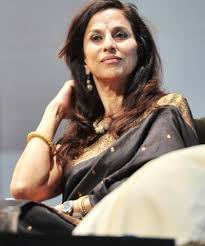
The
effects of training in a multistage “complete process of creative problem
solving” on attitudes and behaviors of individuals were assessed both
immediately after training and return to work. A controlled field “true”
experiment was conducted within an
engineering department doing applied research in a large industrial
organization . multiple methods and measures were employed on trained , placebo
, and nonplacebo groups . The process trained addressed three critical stages :
problem finding , problem solving , and solution implementation, each containing a fundamental diverging
–converging two –step process called “ideation- evaluation” . the main findings
strongly suggest the training resulted in significant , systematically
measurable effects both immediately after training and two weeks later and
work. The trained participants were significantly higher in preference for
ideation in problem solving , practice of ideation in both problem finding and
problem solving ,and performance in problem finding . the data give rise to
speculation that there may exist differing “optimum ideation – evaluation ratios”
for each of the problem finding ,problem solving and solution implementation
stages. These ratios may also differ by field of endeavor.
VOL- 2, ISSUE- 1, PUNE RESEARCH DISCOVERY (ISSN 2455-9202) JIF 2.01
2.1.29 DISCOVERY
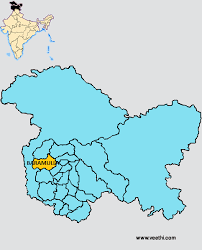
Education means “to draw out” facilitating the realization of self-potential and latent talents of an individual. Many theories of education have been developed, all with the goal of understanding how the education of Women can acquire knowledge. Education for women is the best way to improve the health, nutrition and economic status of a household that constitute a micro unit of a state economy of Jammu and Kashmir. In this paper, the first objective has been chosen after the study of the many research papers where scholars discuss the gender disparity in education of women in Kashmir. It has been argued as an objective that the improvement of Education of Muslim Women in Baramullah district. Though, the participation of women in the field of education is not very satisfactory, because the barriers for the Muslim Women in Kashmir is more than their counterpart as per the secondary data (census 2001) the gender equity in education is the process of being fair to women and men. The social inclusion as per the theme of the conference discusses the empowerment of the women’s socio-economic education, health, etc. The second objective discussed the effects of social inclusion on education. And the focus of this paper understands and explores the barriers to women’s education. The data used in this paper are taken from the reports and journals.
Key words Development, Education, Government, Social Barriers
VOL- 2, ISSUE- 1, PUNE RESEARCH DISCOVERY (ISSN 2455-9202) JIF 2.01
2.1.30 DISCOVERY
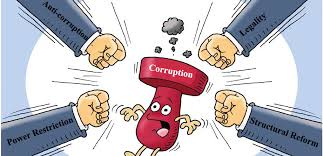
The
pressure mounted by the international donor community on developing countries
to improve their governance is not founded. Evidence has shown that efforts
made by these countries to revive their economics cannot succeed because, among
other things, of bad management and corruption. Certainly as The Times puts it,
corruption is common place everywhere but the pace and degree at which it has
been spreading its tentacles in the developing country has drawn the cons urn
not only of the international donor community but governments of developing
countries as well.